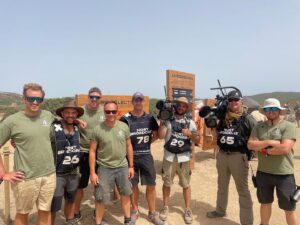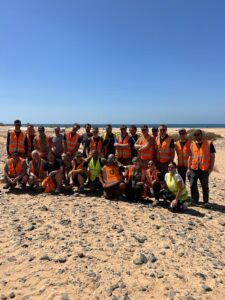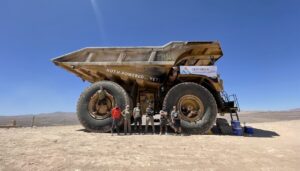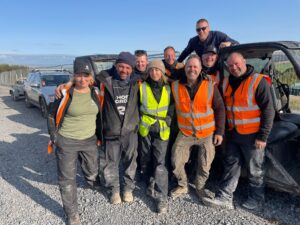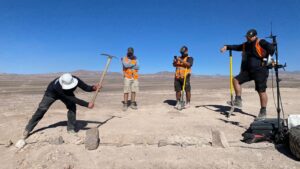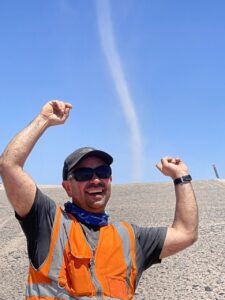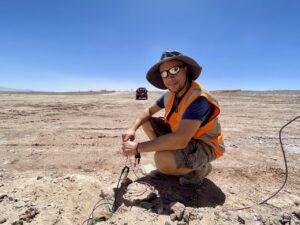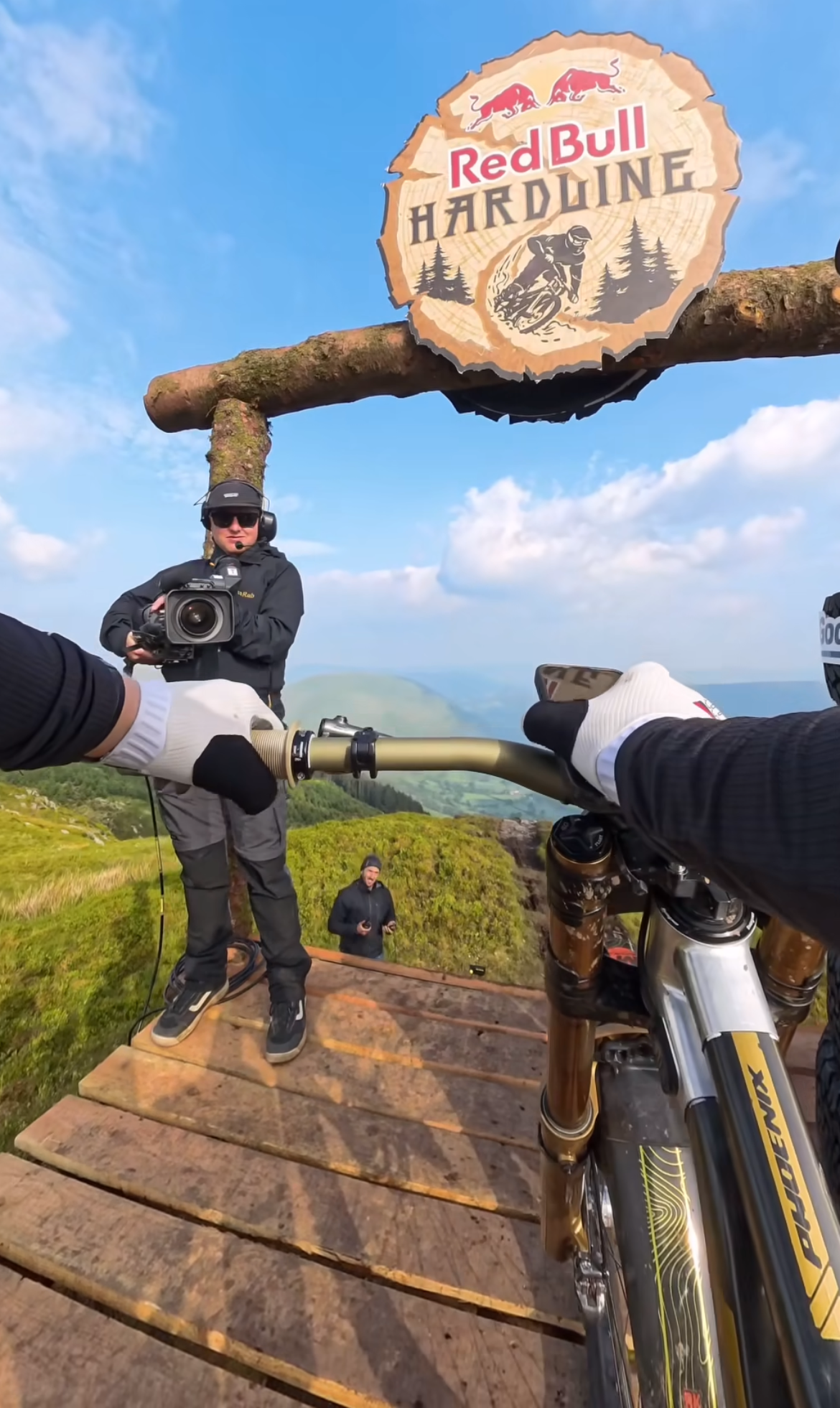What is Extreme E?
Extreme E (XE) is an off-road racing series that had its first season in 2020. Founded by the team behind Formula E, it is the off-road equivalent, but it brings a lot more to the table. Perhaps more than any other race series, Extreme E creates a universe around the teams and drivers, and brings new values to the table to expand its appeal beyond just the racing. Each team comprises a male and female driver, who swap over half way through the race in the “Switch Zone”. It is up to the team who runs first in each race so a lot of the time you end up with men and women racing head-to-head, a really exciting progression in elite motorsport. Extreme E also places a huge amount of value on its sustainability credentials. It is natural for all electric motorsport to be pushing the zero-emission aspect of the cars, but with Extreme E they are aiming to expand this to include the whole travelling circus. A big part of this has been the boat which Extreme E purchased and repurposed to be the floating transport for all the equipment between races. And given some of the remote locations Extreme E has travelled to this has offered freedom and flexibility as well as being an enormous floating advert for the sport. Additionally, XE has sponsored a number of “legacy projects” focusing on environmental causes in each of the locations where races take place. Around each race drivers will take part in legacy days, highlighting these projects and the good work that they do, and teams and crew return year after year to see the progress that is being made.
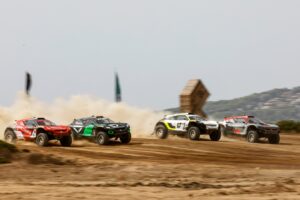

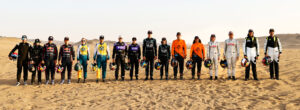
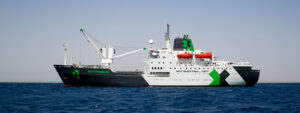
Broadcasting Extreme E & my role as a Camera Operator
Beyond the sport itself, Extreme E is also an incredibly unique and challenging broadcast to be a part of. The most obvious challenge is the conditions the races are held in. The crew and kit deal with all sorts of conditions but the main challenges are most commonly the heat, and the dust. The team on site is small, as host producers Aurora use remote production wherever possible to keep environmental impact down, so we have to be really efficient in getting everything set up, tested and ready to go for the race days, of which there are usually two.

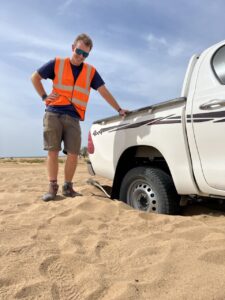

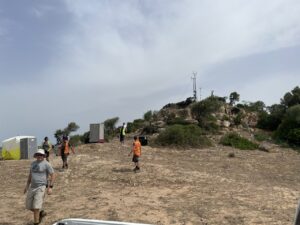
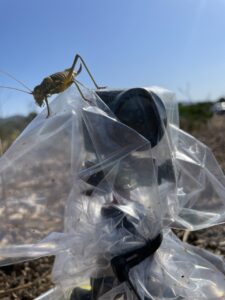




Race day itself usually starts early. With three sessions of racing to get through (heats, qualifiers, finals) and charging / repairing the cars between, we can often be heading out onto the track as dawn breaks. Working on Extreme E is tough but offers unique experiences and incredible scenery. The action on track is frenetic and means you have to be on your game right from the start. The cars positions chop and change regularly, and the is plenty of contact meaning you have to be alert to what is happening throughout the race, helping the producers to spot stories and keeping across any cars that could be lapped or limping home with damage.
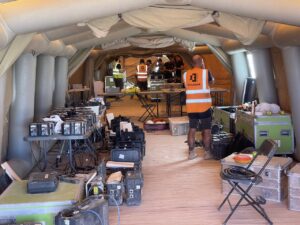
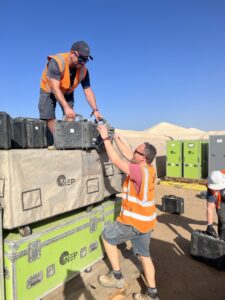
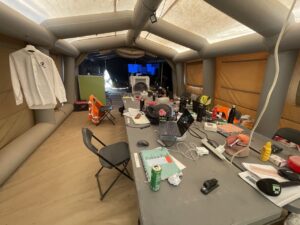
There are two main cameras that are in regular use as part of the XE broadcast. The Sony Z750 and F55. We also carry a range of lenses including the Canon UJ111, CJ20 and CJ45. Covering a track that can be several miles long with only six operated track cameras means getting really creative about how you use them. Tracks are recce’d in the months before an event but have often been tweaked or changed by race week. The long lenses provide great coverage and can bring the cars a long way around some of the higher speed sections, but the standard lenses are equally important. They are usually positioned at the critical passing places or to show off a unique track feature such as a particularly tricky jump or corner. All the camera operators on site record to card during the races at higher frame rates meaning that we are also responsible for playing back any replays of the action. Usually this happens immediately after each heat finishes, but if it is something critical to the story we always aim to get the shot played back whilst the cars are on the other part of the lap. It is a system that actually works really well but requires confidence in shuttling through camera menus, and knowing exactly where you fit into the ongoing broadcast. You don’t want to end up playing back a replay down a feed that hasn’t been switched to you, or still being in playback when the cars come back around on the next lap. The broadcast is all 50p with the Z750’s recording at 100fps and the F55’s 150fps.
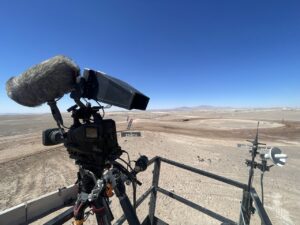
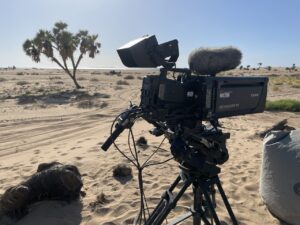

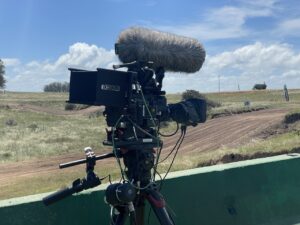
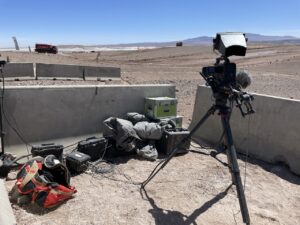
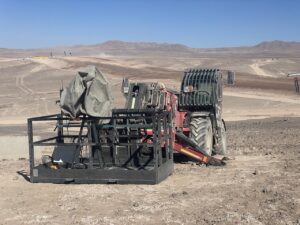
The other major difference between XE and other Outside Broadcasts is that all the track cameras are RF linked. There is no SMPTE camera cable on site. We use radio comms and don’t have returns, so are relying on the director and our knowledge of the racing to make sure we are offering the right shot at the right time. Good coverage means choosing to show wider shots of the landscapes or pushing in to detail how one car might be handling a certain section of track. Races are only four laps long so every second counts, both as a driver and as part of the TV crew.
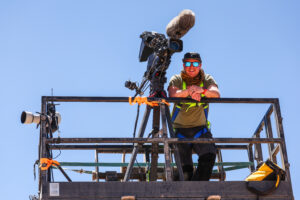
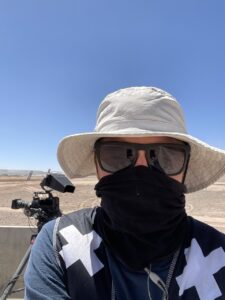
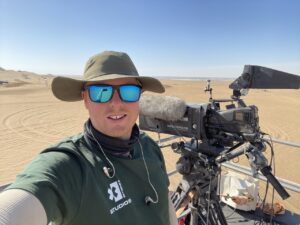
In addition to the track cameras there are also handheld RF cameras that cover the action elsewhere on site. I really enjoy this role, reacting quickly to what is going on during the race, telling the human stories and anticipating where the action will take place.
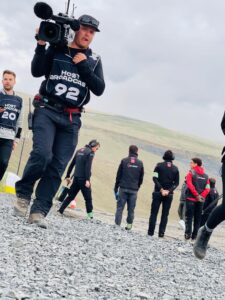

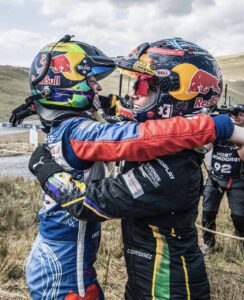
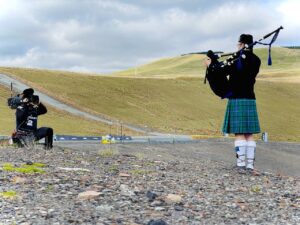
Working with the reporter, there is always lots to do. I will usually be in the paddock before and after the races capturing reaction from drivers and team bosses. During the races I shuttle between the Vodafone “Command Centre” where the teams base themselves, and the switch zone, where the driver changeovers take place. There are five bays and five stories, so it is up to the producers to send me where the best stories are. Then I as the camera operator must choose the best shots to show what is going on whilst staying out of the way and, most importantly, staying safe.
At the end of race day it gets very busy. With great reactions from the teams as they head back in and celebrate, followed by interviews and the podium ceremony with the mandatory champagne spray. It is always chaotic but the best fun getting in there and bringing the energy to the viewers back at home.

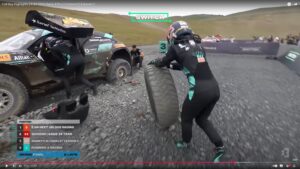
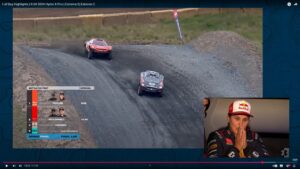



Complimenting the track and handheld cameras are also a combination of drones (one larger drone and one FPV), onboard cameras in all the cars, and fixed cameras in Race Control and the Command Centre. The other major role for the camera department is positioning and digging in minicam positions around each track. The mini cams work hard on XE, and each race weekend we spend a lot of time maintaining them and repositioning them. It is all about finding the sweet spot where the shots look at their most spectacular without taking too much risk and ending up with a load of smashed cameras. Most of the time we get this right but there have been occasional casualties over the years. It is definitely worth it though for the spectacular moments they capture.
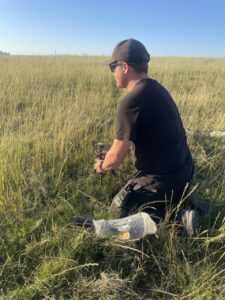
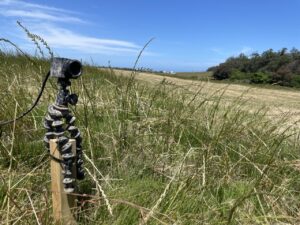
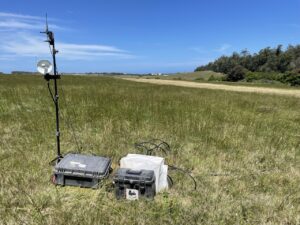


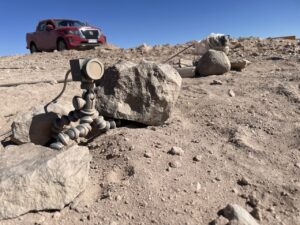
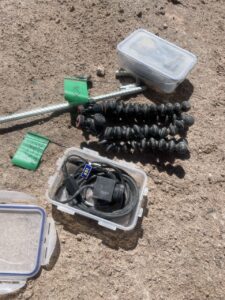
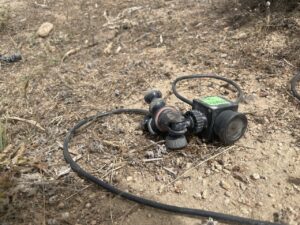
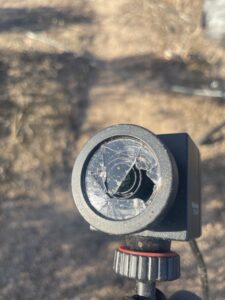
What is the future for Extreme E?
Extreme E has run for the past four years at the forefront of motorsport technology and whilst it is currently on a brief hiatus things look set to pick up again with the launch of Extreme H. The cars are switching from battery to hydrogen fuel and will be the first FIA World Cup race series to use this. The combination of great racing, great values and great locations looks set to see the series go from strength to strength, and hopefully more information about the Extreme H calendar will be released soon as I can’t wait to see where we will be going next!

